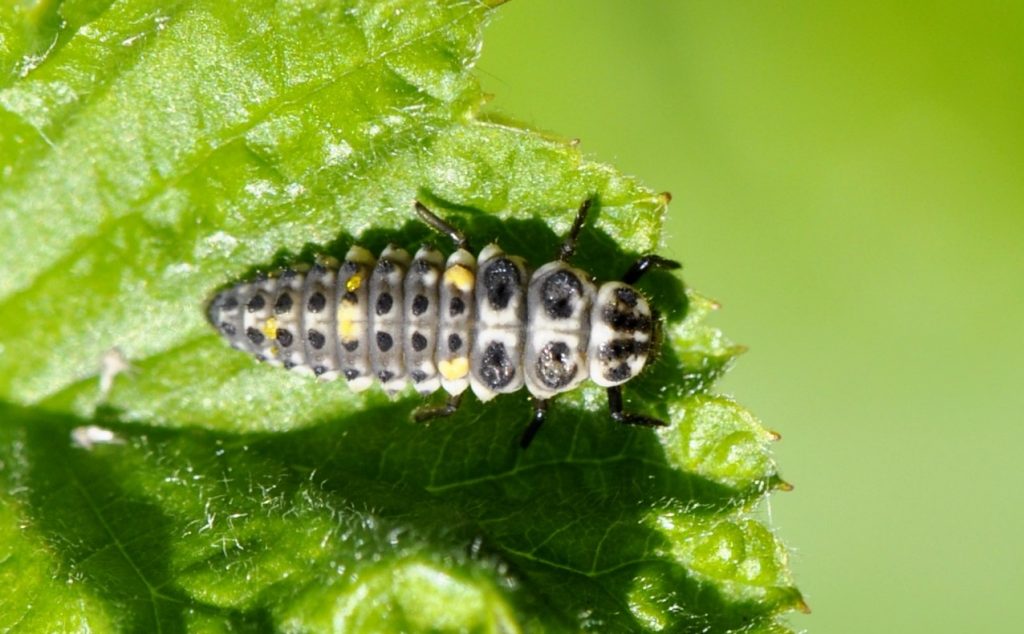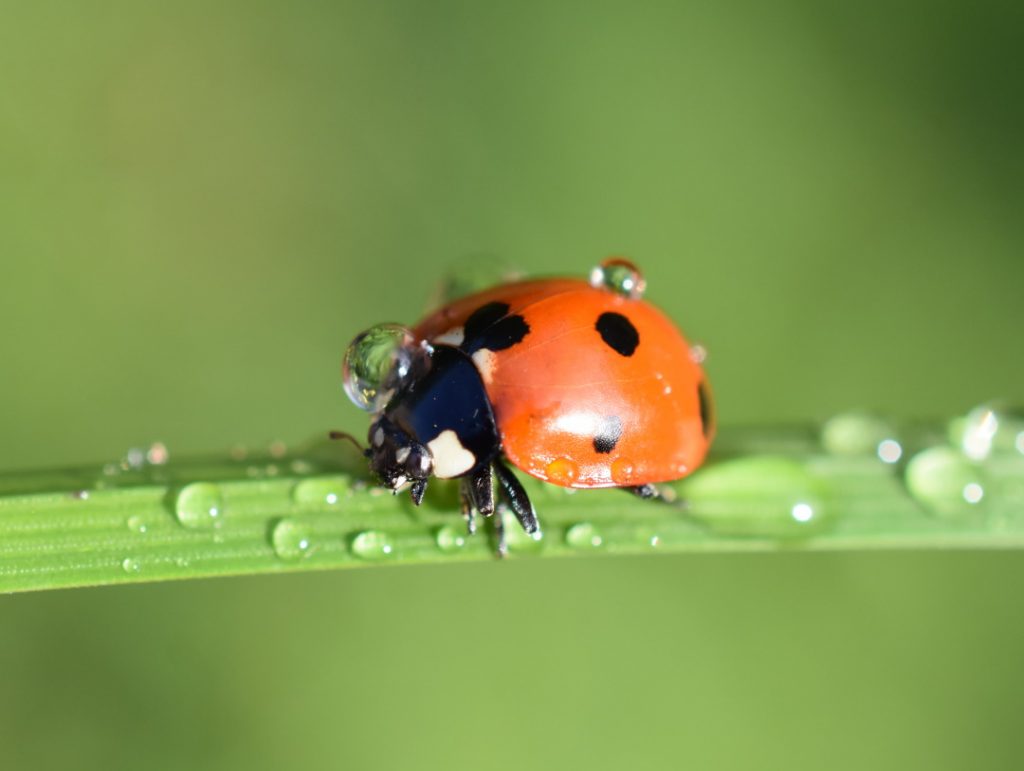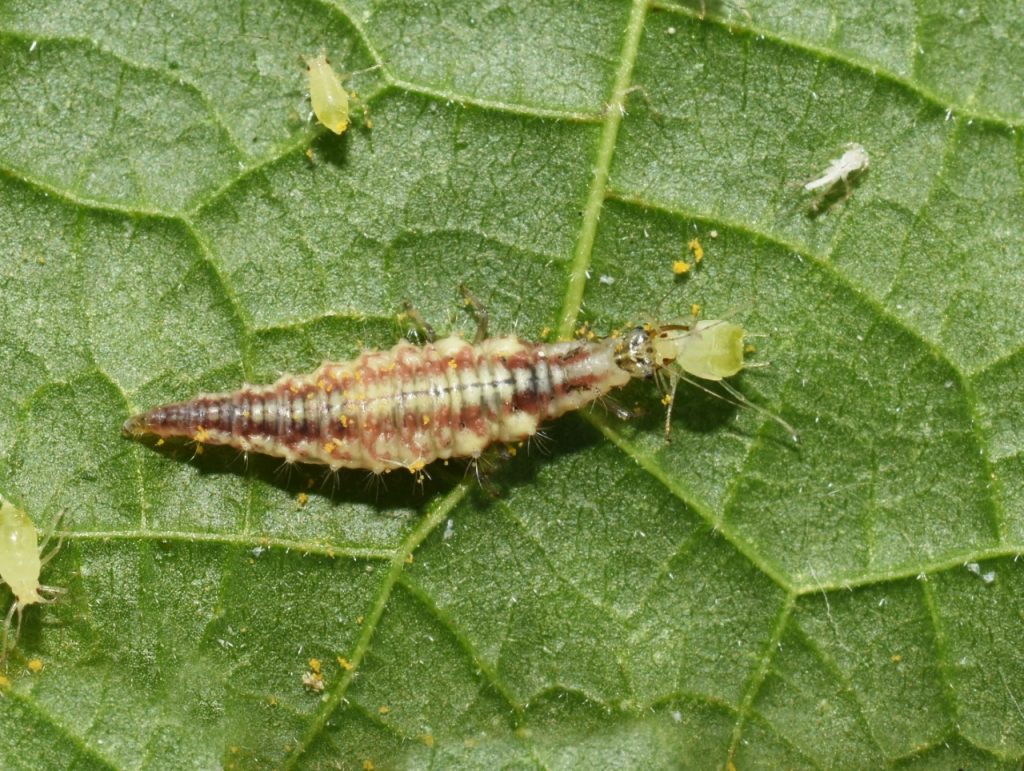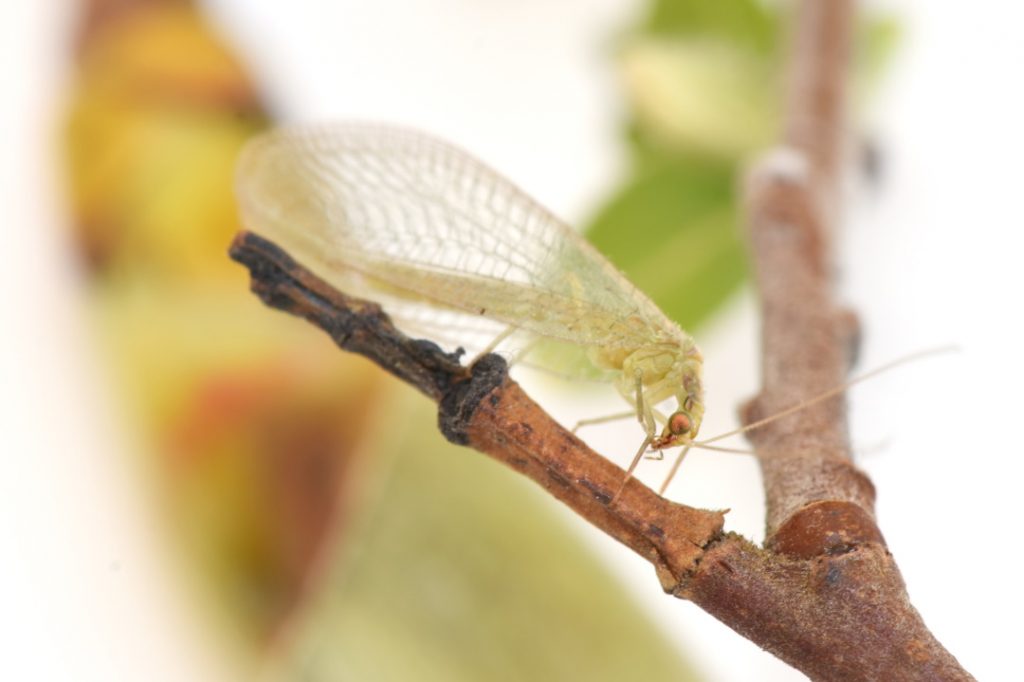With insect populations seeing catastrophic decline worldwide, researchers have confirmed, time and time again, what we were all thinking: Insecticides play a major role. At the same time, aphids — tiny, fast-spreading, garden-decimating herbivores — are running rampant on your precious plants. Do we have to choose between aphid infestations and a bad conscience? Not so fast. It’s possible to deal with your aphid situation in a way that actually helps insects thrive.
When reading about natural means of aphid control, two will reoccur: Ladybugs (also called ladybirds) and lacewings. Aphids make up a large portion of their diets, and introducing them to your garden has more benefits than just getting rid of pests.




If you are currently experiencing an aphid infestation, and ladybugs and lacewings are not around to help you out, it may be a sign that you have an unbalanced garden. Consider the infestation as a blessing in disguise: You have spotted a symptom of a deeper problem, and can now treat the root cause.
Before you go ahead, keep in mind that you may be able to find these insects sold online as eggs, larvae or adults. However, making sure that they are native in your vicinity may be difficult, and you may not get a healthy mix of species that represents the local diversity. Collecting them is free, makes for a good excursion into nature, and ensures that you’re bringing in the kind of native diversity found nearby.
Ladybugs
The diet of ladybugs consists largely of other insects and pollen. Conveniently, aphids are a favorite of theirs. A single ladybug can eat 5,000 aphids in its lifetime, according to Ric Bessin of the University of Kentucky College of Agriculture.
There are two ways of introducing ladybugs to your garden.
Ladybugs can be found and collected in your local area. By doing so, you can be sure that you are not introducing invasive, introduced species into your garden and helping them to spread and disrupt ecosystems. Just remember to poke holes in the lid of your capturing device, so that oxygen is accessible and the specimen doesn’t overheat. It’s also possible to buy ladybugs online, but keep in mind that you should ensure that they are native to your area.
Another way to help ladybugs find their way to your garden is to provide them with the plants they like the most. Pollen makes up a large part of their diet, so they are unlikely to establish themselves in a garden without this essential food source. If your garden contains the favorite food of ladybugs, the probability of them entering your garden is high.
You’re going to want to make your garden ladybug-accessible regardless, or your collected ladybugs will move on to greener pastures. Therefore, it’s a good idea to start by making your garden attractive to ladybugs, and then collect local ladybugs to be released near aphid-infested plants.
For your convenience, here’s a list of plants that can help attract ladybugs. There are surely many more plants that do, and the list will vary depending on the species of ladybugs found natively in your area.
- Angelica herb (Angelica arcangelica)
- Calendula flowers (Calendula officinalis)
- Yarrow (Achillea millefolium)
- Dill (Anethum graveolens)
- Marigold flowers (Tagetes sp.)
Lacewings and their larvae
Like ladybugs, adult lacewings eat pollen in addition to other insects. Additionally, they eat honeydew produced by aphids. The larvae eat other insects, and are especially fond of aphids. Plants of the Alyssum genus, umbellifers (Apiaceae) and catnip (Nepeta cataria) help attract lacewings.
There has also been made an insect «cologne» that attracts lacewings. Researchers isolated a compound of the catnip plant — iridodial — which lacewings are attracted to.
Some garden shops or online shops also sell different beneficial insects. Again, make sure the insects you buy are native to your local area.
General tips
Let’s go through some useful tips that will help you better understand and cater to the diets of both lacewings and ladybugs.
Offer some homemade honeydew
The honeydew produced by aphids attract their predators. This sugary solution is excreted by aphids as they feast on leaves. Among other things, it works as a reward for ants in exchange for protecting the aphid colony from predators. (Read more about this, and many other fun and interesting insect facts, in my book: English version coming soon.) If you still don’t have ladybugs and/or lacewings in your garden, you can try to mix some water and sugar and applying the solution to your plants. Beneficial insects may confuse this for honeydew and come to feast.
Don’t forget the (right kind of) pollen
Both ladybugs and lacewings need to eat pollen throughout the flowering season, so make that flowering plants are available in spring, summer and autumn. You can achieve this by having a healthy, diverse representation of wild flowers in your garden. Different species of flowers bloom and produce pollen at different times of the year, and the more diversity you have, the more choices will be available at any given time.
Native insects can rarely survive on foreign plants. Therefore, the more exotic or domesticated the species, the less likely it is to work for ladybugs, lacewings and other helpful insects and pollinators. Make sure you treat wild flowers as first-class citizens, and flowers that have been highly selected for aesthetics (such as roses) are prized guests in select spots.
You can purchase seeds of native plants online, find them in the wild, or you can carefully transplant wild flowers found nearby. If you choose to transplant any plants, make absolutely sure that the species is not endangered, that you are not in a national park or other protected area, and that you are carefully removing just one or two out of a healthy, established colony.
Be patient
It may take some time for a healthy population of ladybugs and lacewings to get established. If you give it a week or two, fail to see any progress, and want to give up, try to resist the urge to use insecticides. This will make it impossible for your work to come to fruition, as most insecticides will also kill ladybugs and lacewings. Furthermore, seeds of many flowering plants must go through a frost cycle before sprouting. Pledge to go two whole years without any insecticides and continue to introduce the recommended plants and insects to your garden.
Leave the spiders alone
Some of you may object to this piece of advice, but spiders prey on aphids and many other harmful insects in your garden. Cobwebs may not be beautiful, but leave the hidden ones alone to give spiders a means of preying on invaders. Not all spiders spin webs, either. If you live in an area without spiders that are dangerous to humans, you will be better off conquering the fear of spiders and seeing them as allies in your fight against the aphids in your garden.
The balanced garden
Humans are neat freaks. We experience a primal need for order, clean lines and control. We are also collectors, and when it comes to the garden, many prefer the uncommon and spectacular over the familiar and subtle.
However, perfectly green, uniform and cut lawns are not hospitable to insects, and neither are most exotic flowers.
By trying to control nature in this way, and not fully understanding the multitude of fragile relationships in ecosystems, we are depriving predatory insects of their necessities. Aphids, on the other hand, are hardy and can feed on many exotic plants, and they multiply fast. Therefore, an overly controlled, unbalanced garden allows aphids to thrive, free from predators.
That is not to say that you shouldn’t mow your lawn. If grass and tall perennials are allowed to grow too tall, flowers cannot survive. An annual mowing of flower spots is good for the flowers. Just save it for when the plants are done flowering and have had time to complete their natural cycle.
By catering to ladybugs and lacewings, you’re also inviting a multitude of other insects to your sanctuary. This helps both the planet and local agriculture. (Learn how important insects are to humans and how you can help them recover.) You will also learn that self-sustaining fields of flowers are downright stunning.
About the author
Hjørdis Bakke is a Norwegian entomologist (a biologist that specializes in insects) who teaches at Queen Maud University College. After having previously authored curricular books, she now focuses her efforts on insect preservation.